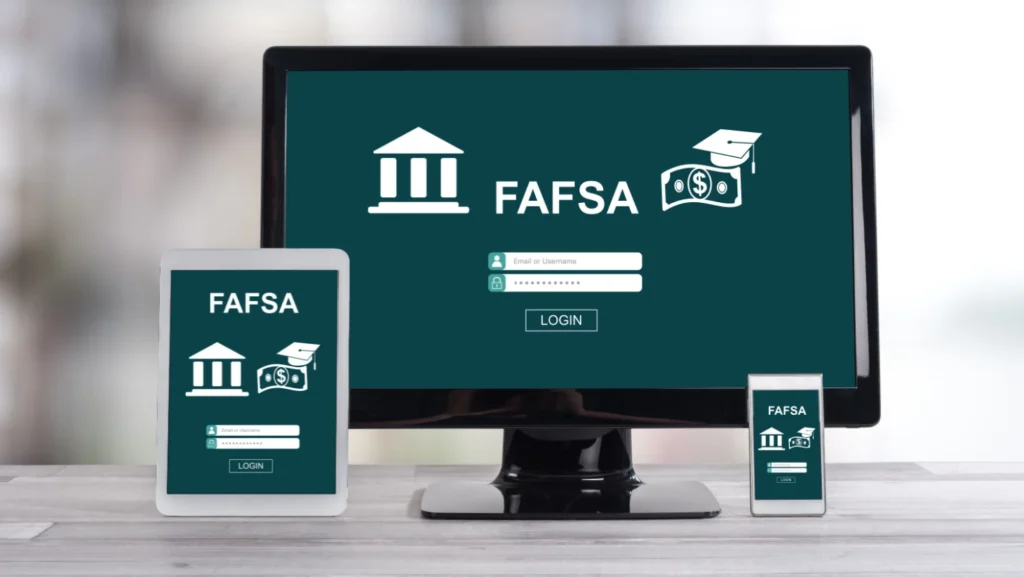There are no fixed FAFSA income limits. Any student can file the Free Application for Federal Student Aid. FAFSA uses the Student Aid Index (SAI) to determine how much a family can afford to pay. The SAI reviews income, assets, and family size.
Colleges compare the SAI with the cost of attendance to decide how much aid a student may receive.
Table of Contents
ToggleHow FAFSA Calculates the Student Aid Index (SAI)
The SAI looks at parent income, student income, assets, and tax details. Parent income counts at different rates after protection allowances.
Student income above a certain amount is weighted more heavily than parent income. These values form the basis for the numbers colleges use to determine aid.
Key Factors in the SAI Calculation
- Parent income and student income
- Parent assets and student assets
- Family allowances
- Number of dependents in college
These factors provide colleges with a comprehensive view of a family’s ability to pay.

Using Official FAFSA Tools to Estimate Aid
Families can use the Federal Student Aid Estimator to see likely aid results. The tool follows the same steps colleges use. Each college also has a Net Price Calculator that shows expected costs. These tools help families plan early.
Example Scenarios for Different FAFSA Profiles
An independent student reports only their own income, which can lower the SAI and result in increased aid.
Families with small farms or businesses should review new rules for 2025–2026. Some assets may now be included in the SAI.
These examples show how different financial situations can change aid results.
A Practical Look at Aid Outcomes
Many families believe they earn too much to qualify for aid, but the FAFSA considers more than just income.
We often help families who still qualify for grant awards, federal student loans, or merit-based support once the full form is reviewed. Filing early reduces delays. Our goal is to help families move through the process with confidence.
At CollegeCommit, we guide families through each step. There are no limits tied to FAFSA household income, and the SAI is the main factor. Income, assets, and family size all shape the review.
CollegeCommit offers elite college admissions consulting, expert essay coaching, and top-tier tutoring and test prep.
Our experienced advisors guide students through every step – from academic planning to college strategy – with accuracy and care. We help motivated students gain admission to top colleges through thoughtful, personalized mentorship.
FAFSA Income Limits and Eligibility
Many families search for FAFSA income limits, but the FAFSA does not set a single number. There is no fixed financial aid income limit, and any student may file the Free Application for Federal Aid. Families who want more help can read our guide on how to get financial aid for college.

Are There Income Limits for FAFSA?
There are no income caps for federal financial aid. Even students from higher-income families may qualify for loans or certain school programs. Filing the form keeps all options open.
What Is the Maximum Income to Qualify for FAFSA?
There is no single rule for the FAFSA income limit. Colleges compare the SAI to college costs to decide need. Some students may still receive grant awards depending on the gap.
Families often ask how much is too much income for FAFSA, but the answer depends on school costs and the student’s financial profile.
Do Parents Who Make $120,000 Still Qualify?
A family earning around $120,000 may still qualify for aid. Results depend on tuition, dependents, and the full financial picture. Parent income is only part of the SAI. Some students may also qualify for merit-based support.
If Parents Make Over $75,000, Can Students Still Get Aid?
Many families earning above $75,000 still qualify for federal financial aid or federal loans. The FAFSA looks at all financial details, not just income alone.
FAFSA Income Limits for Independent Students
FAFSA separates dependent students and independent students. Independent students often receive more aid because only their finances are counted.
How Household Income and Family Size Affect Aid
FAFSA household income matters, but it is not the only factor. FAFSA reviews total income and assets, the number of dependents, and how many household members attend college. These details change the SAI and the aid offered.
What Income Counts on the FAFSA?
FAFSA uses tax information from the prior year. Families must report wages, dividends, and specific untaxed income. Correct information helps avoid delays.
FAFSA Income Limits for a Family of 3 or 4
Family size impacts how much a family is expected to pay. Larger households receive more allowances. A family of four may get more aid than a family of two at the same income.
Pell Grant Income Limits and Eligibility
Pell Grants support undergraduate students with strong financial need. There is no fixed income cutoff. Aid depends on the SAI and the student’s full financial picture.
FAFSA Income Limit Updates and Calculator Tools
The Department of Education updates rules each year to match economic conditions. Families should look at these changes early.
FAFSA Income Limits 2025 and 2026 Changes
The 2025–2026 FAFSA will use the SAI rather than the old EFC model. This change aims to make the process easier to understand. Colleges still compare the SAI with total college costs.
FAFSA Income Eligibility Calculator – How to Estimate Aid
Families can check likely results before they complete the FAFSA. A calculator shows how details like income and family size shape aid. To learn more about coverage, read our guide on how much FAFSA can cover.
FAFSA Income Limits – Common Discussions
Online groups often talk about income levels for FAFSA, but not all advice is accurate. Students should rely on official sources. Families comparing aid with scholarships can read how much a scholarship covers.
What Disqualifies a Student From FAFSA?
Income does not usually block aid. Errors on the form are the most common issue. Students should check their application for federal student aid before submitting.
Common FAFSA Errors
- Incorrect or missing tax information
- Wrong dependent status
- Forgetting to list all schools
How to Correct Issues
Families can log into FAFSA to update the form. If income changes, colleges may adjust grant awards after review. Sending updates quickly helps the process.
Smart FAFSA Strategies for High-Income Families
High-income families still benefit from filing. Many colleges require it for merit-based review. Filing keeps students eligible for more programs.
How the Student Aid Index (SAI) Determines Need
The student aid index SAI compares family resources with school costs. A lower SAI may increase the need for need-based aid.
Even with a higher SAI, students may still qualify for certain programs and can still meet the maximum income for financial aid set by institutional rules.
Why High-Income Families Should Still File FAFSA
Filing keeps students eligible for federal student loans and school-based aid. Some colleges also need FAFSA for internal award review.
Families may also check their own financial aid salary limit to understand how schools look at aid.
Maximizing Institutional and Merit Aid
At CollegeCommit, we help families stay organized and submit documents on time. Planning early avoids delays. We don’t just advise – we engineer your student’s admissions edge.
Filing Timeline and Next Steps
Preparing Financial Information Early
Gather tax information and asset records before October. This helps the filing process. Early prep also supports appeals if needed.
FAFSA Deadlines and Key Dates
FAFSA opens in October each year. Filing early helps with federal financial aid priority dates. Families should check each college’s deadlines.

Updating FAFSA After Income Changes
Families can update FAFSA if income or expenses shift. Colleges may adjust aid once they review new documents. It is important to act fast.
Verified Sources
We rely on the Department of Education and StudentAid.gov for accurate details on federal student loans, Pell grants, and program rules.
About CollegeCommit
We bring over 20+ years of combined experience to the admissions process. Our advisors include former admissions officers, Ivy League graduates, and expert mentors. We support families across the country through Early Action, Early Decision, Restrictive Early Action, Regular Decision, and rolling options.
CollegeCommit helps students from 8th grade through 12th grade and also supports graduate school planning.
Ready to transform uncertainty into opportunity? Join our upcoming cohort at CollegeCommit: Where Preparation Becomes Placement.
Schedule your free private consultation today


